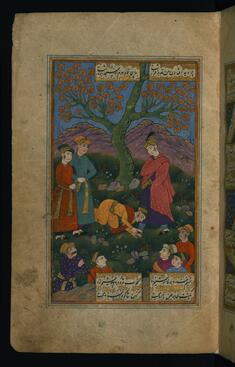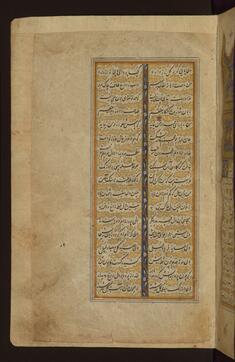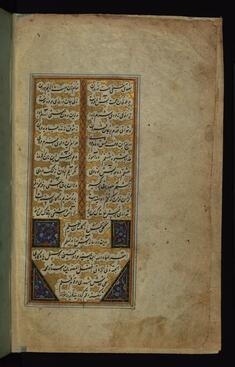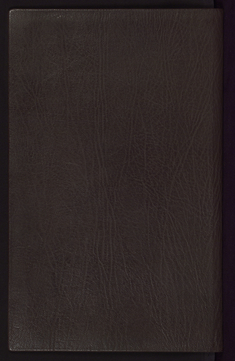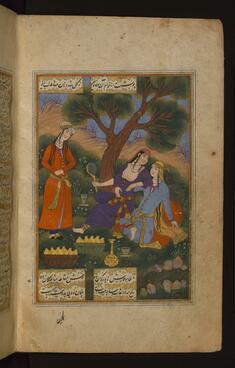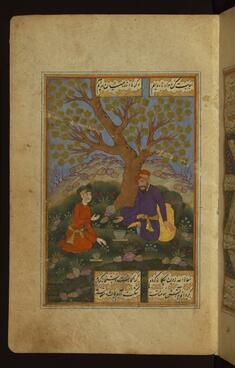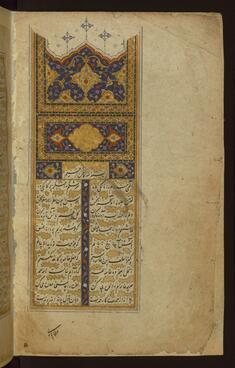Burning and Melting
(Manuscripts and Rare Books, Islamic World , Islamic Manuscripts)
Walters manuscript W.649 is an illuminated and illustrated copy of the poem Suz va gudaz (Burning and melting) by Naw'i Khabushani (d. 1019 AH/AD 1610), which recounts the love story of a Hindu girl who burns herself on the funeral pyre of her betrothed. The codex was written in Nasta'liq in black ink by Ibn Sayyid Murad al-Husayni and illustrated by Muhammad 'Ali Mashhadi in 1068 AH/AD 1657. According to the colophon, Ibn Sayyid Murad al-Husayni copied the manuscript for the painter Muhammad 'Ali, the "Mani of the time," as a "souvenir." The fact that the manuscript was produced for one of the most prolific artists of 17th-century Iran makes it a highly significant document. It opens with an illuminated incipit with headpiece (fol. 1b) and closes with an illuminated tailpiece with colophon (fol. 21b). Text pages have interlinear illumination and small rectangular and triangular pieces with polychrome floral and scrolling vine motifs. There are 8 miniatures in a style associated with the Safavid centers of artistic production of Mashhad and Isfahan (fols. 5a, 9a, 10b, 13a, 14a, 16a, 17b, and 19b).
Provenance
Provenance (from the French provenir, 'to come from/forth') is the chronology of the ownership, custody, or location of a historical object. Learn more about provenance at the Walters.
Henry Walters, Baltimore [date and mode of acquisition unknown]; Walters Art Museum, 1931, by bequest.
Exhibitions
| 2010 | Poetry and Prayer: Islamic Manuscripts from the Walters Art Museum. The Walters Art Museum, Baltimore. |
Geographies
Iran (Place of Origin)
Measurements
Folio H: 9 1/4 x W: 5 11/16 in. (23.5 x 14.5 cm)
Credit Line
Acquired by Henry Walters
Location in Museum
Not on view
Accession Number
In libraries, galleries, museums, and archives, an accession number is a unique identifier assigned to each object in the collection.
In libraries, galleries, museums, and archives, an accession number is a unique identifier assigned to each object in the collection.
W.649
Do you have additional information?
Related Objects

Leaf from Burning and Melting: Hindu Couple United on the Funeral Pyre

Prince Daniyal Accompanies the Young Hindu Girl to the Funeral Pyre
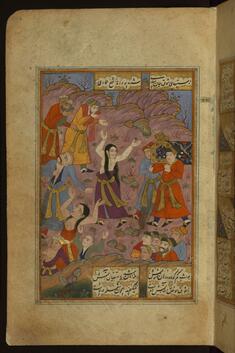
The Bride with Mourners Carrying the Bridegroom's Coffin
